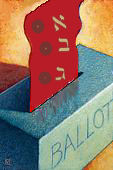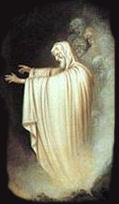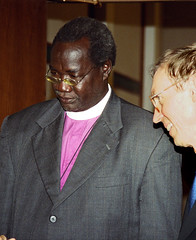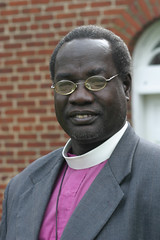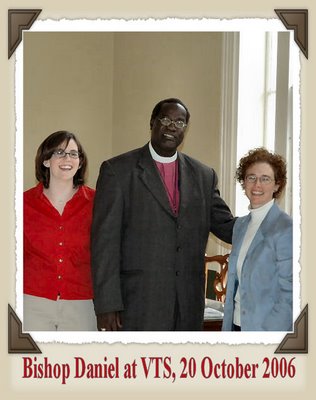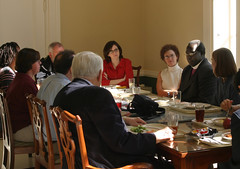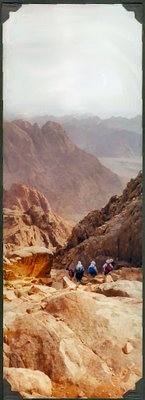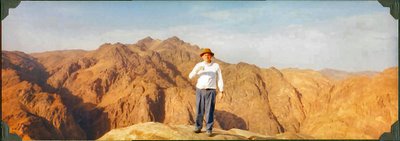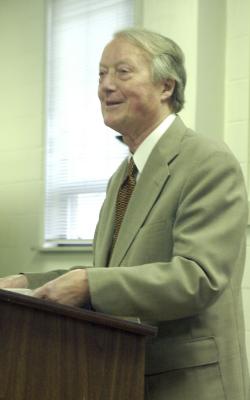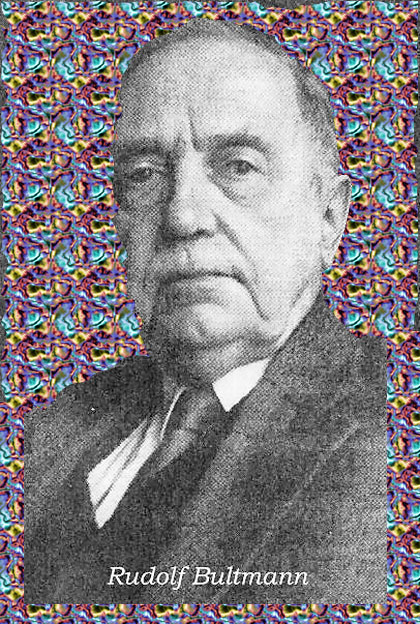Hearty thanks to Elizabeth Felicetti for sharing this marvelous homily on Psalm 1. As I have told her, I wish I could hear expository  preaching like this out in the real church. She delivered this homily on Psalm 1 on Monday in the VTS chapel.
preaching like this out in the real church. She delivered this homily on Psalm 1 on Monday in the VTS chapel.
Happy are they who have not walked in the counsel of the wicked.
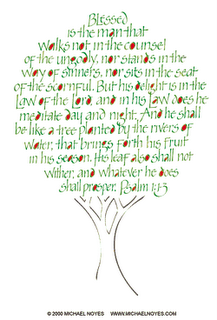
Everything they do shall prosper.
This sounds like the so-called prosperity gospel, the idea that God is a kind of Santa Claus who rewards us when we are good, while the naughty boys and girls are like the chaff that the wind blows away. Or, if things in your life aren't prospering, then you must not have enough faith.
But this simply is not true, at least not as society defines happiness or prosperity. Those who delight in the law of God are not necessarily happier than those who do not. In fact, it often seems like those who do not give a rat's patootie about sin or the gospel have a lot more fun than those who do. Sometimes "the wicked" get rich and famous while terrible things happen to the faithful.
This is true today and was true in the Bible: think of Job asking
"Why do the wicked live on, reach old age, and grow mighty in power?" Think of the terrible things that happened to the prophets for following God's call. Think of Jesus, the human furthest from wickedness, who suffered the humiliation of death on a cross. And think of our friends and family who suffer today.
"Blessed" is another translation for
אשׁרי, the word our prayer book translates as "happy" in Psalm 1. But changing the translation from "happy" to "blessed" doesn't change the trouble of the text, because if we say "Blessed are those have not walked in the counsel of the wicked," the blessing still has a connotation of benefit. Blessings are good things--the opposite of curses. So if they who have not walked in the counsel of the wicked are blessed, then surely they will be rewarded.
But as Kent Richards writes [1], the benefits of blessings are
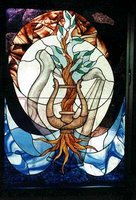
secondary. The primary function of a blessing is the establishment of a relationship. Those who delight in the teaching of God are not guaranteed that benefits will flow from this relationship, but they are blessed because of the relationship created between them and God, a relationship which can provide them, provide us, with a foundation so that we can be like trees planted by streams--in other words, closer to a body of water that can provide nourishment so that we can stay alive and even bear fruit during the droughts or disasters that come with life.
The idea of blessing and happiness in the Bible is different than our autonomous American ideal of putting ourselves first. In Psalm 1, God comes first. The happy or blessed one who meditates on the teaching of God is putting God in the center, instead of him- or herself.
In a recent
Newsweek article, Rabbi Marc Gellman wrote that "very bad people can be very happy"; but, he points out that happiness in our culture has come to be synonymous with pleasure, and that in fact, these two words are not synonymous.
I can commit all kinds of sins that might result in temporary pleasure, but that is not the path to true happiness, "the way of the righteous" that the psalmist describes. Bad things happen to good Christians. But they are still blessed. When we look at the Psalter as a whole, we see faith and hope, as in this psalm, but also lament and despair. We see this in the Bible as a whole as well. We see the life of the cross, but we see the promise of the resurrection. In the Hebrew psalms class last year we learned that one way to translate verse five of Psalm 1 is, "therefore the wicked will not resurrect in the judgment."
But who are the wicked? The bar for the righteous seems to be set pretty high in this psalm. Do you all meditate on God's teaching day and night?

Clinton McCann [2] suggests that the righteous are not necessarily morally superior, but are those who are open to God's teaching and God's will, while the "wicked" are the autonomous ones who are self-centered and self-directed.
Following Jesus in the way of the righteous will not be easy and may not lead to riches or to happiness by the standards set by our society, but we will be blessed in this life and in the one to come. AMEN
---------------------
[1] Richards, Kent, "Bless/Blessing," in
The Anchor Bible Dictionary, vol. 1, ed. By David Freedman, New York: Doubleday, 1992, 754.
[2] McCann, J. Clinton and James Howell,
Preaching the Psalms, Nashville: Abingdon, 2001, 91-92.




